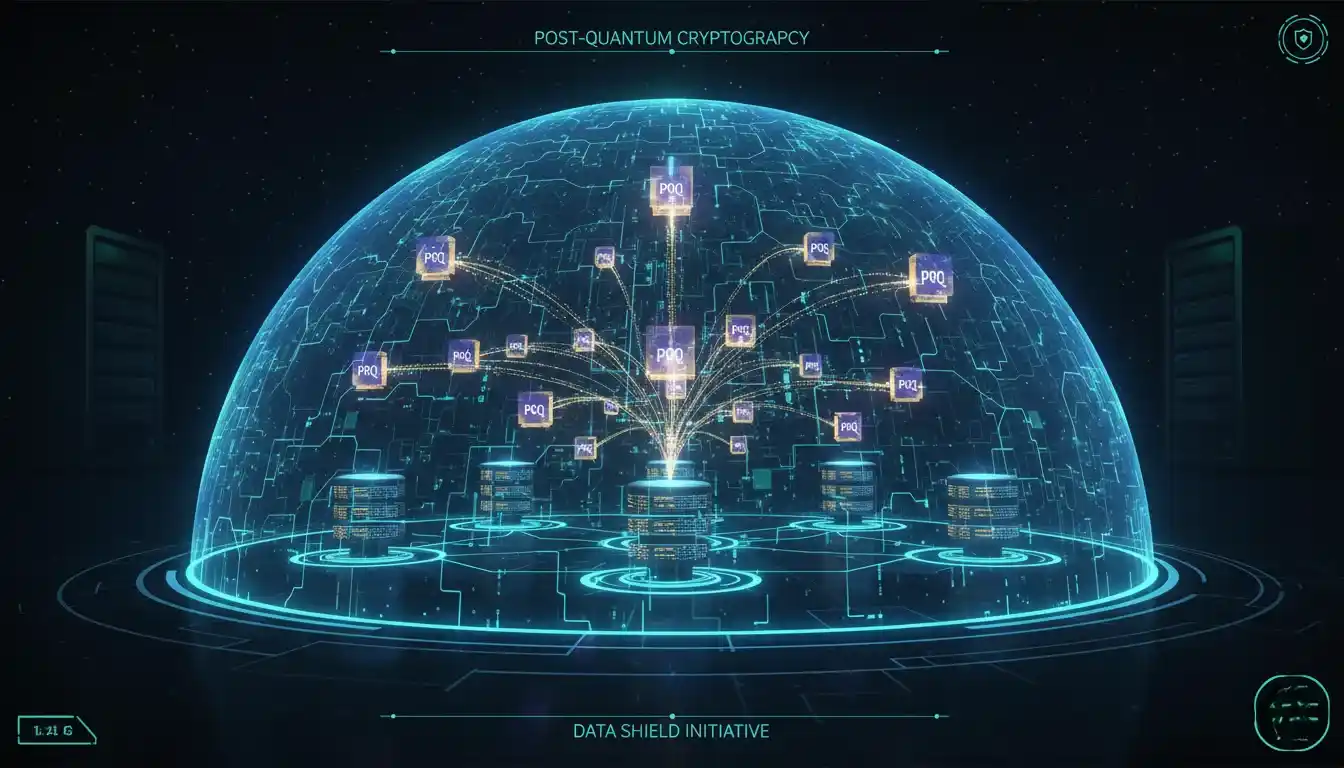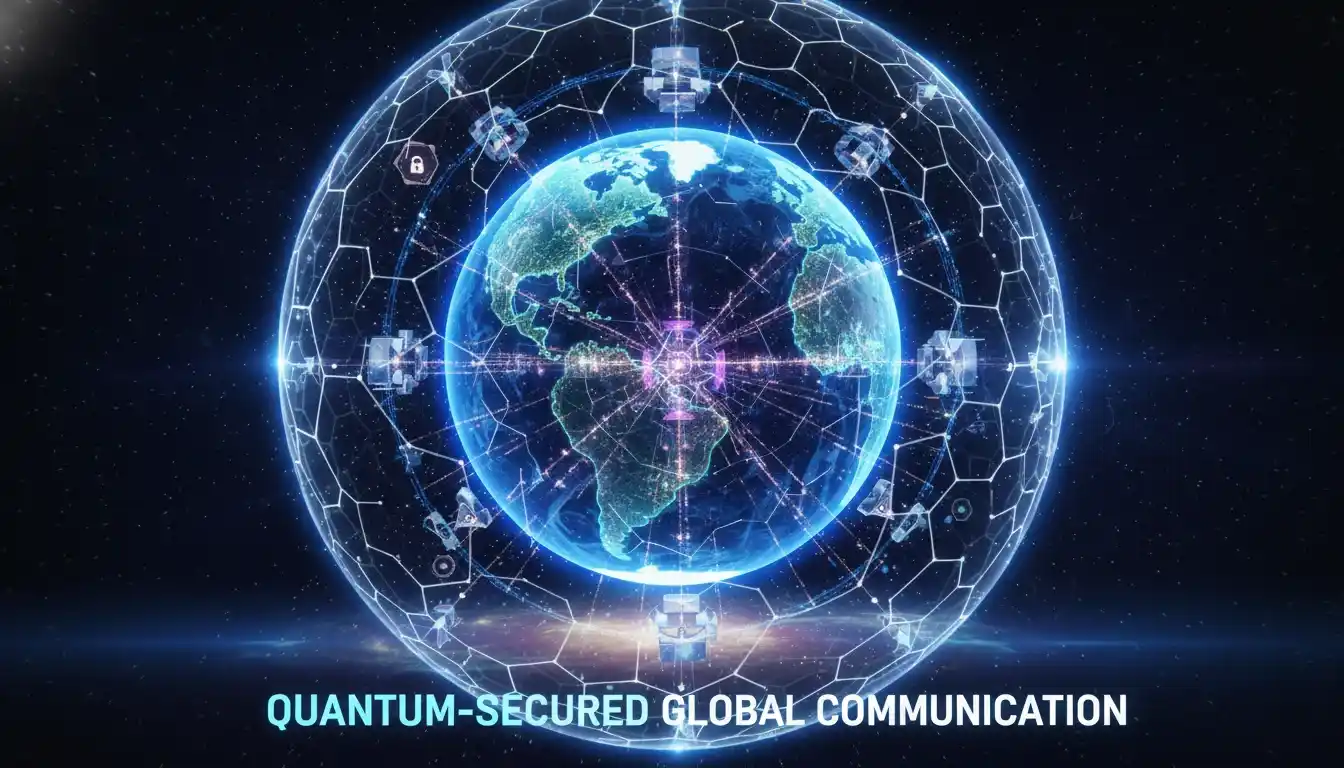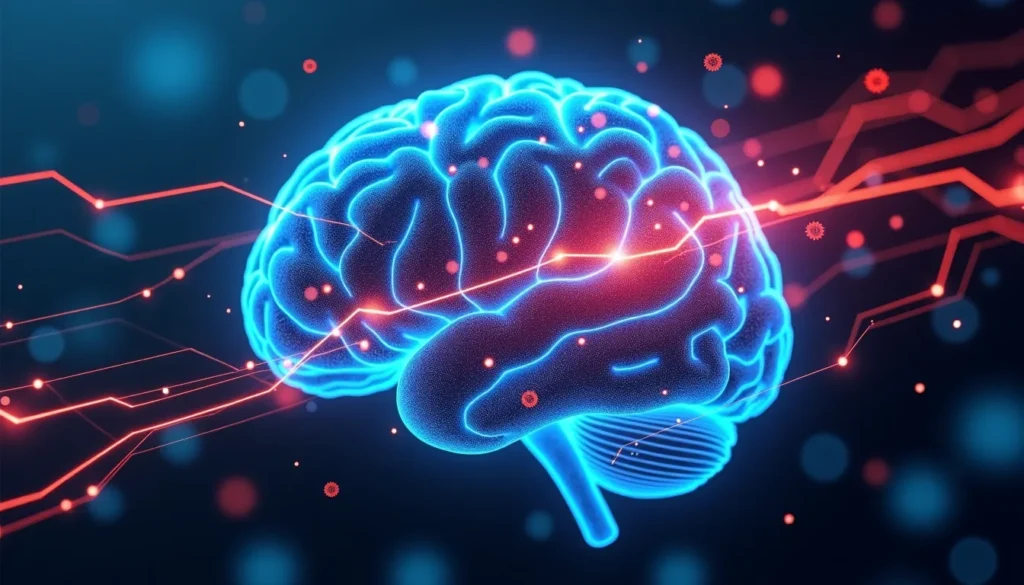Post Quantum Cryptography: The Next Great Leap in IT Security
Understanding Post Quantum Cryptography
Post Quantum Cryptography stands as humanity’s silent guardian in the digital age and is at the epicenter of every major IT Security Trend today. Every digital login, bank transfer, or private chat depends on cryptographic principles that keep outsiders away. Yet a tectonic shift is coming—quantum computing. With its power, the traditional encryption we’ve trusted for decades may soon crumble. That’s where Post Quantum Cryptography (PQC) steps in, designed to guard information even against machines that think far beyond binary logic.
Importantly, Post Quantum Cryptography isn’t about replacing what works; it’s about future-proofing what truly matters for IT security. Unlike classical techniques, PQC draws strength from complex mathematical puzzles that quantum computers can’t solve. Key advancements include lattice-based, multivariate, hash-based, and code-based systems. Each depends on deep mathematical chaos, ensuring the strongest form of quantum resistance—a core requirement of any forward-thinking IT Security Trend.
Global initiatives are driving PQC transformation at high speed. The U.S. National Institute of Standards and Technology (NIST) has completed its first round of PQC standardization, selecting algorithms like CRYSTALS-Kyber. These new standards are reshaping the backbone of future networks, ensuring emails, payments, and state secrets remain hidden, aligning closely with every recognized IT Security Trend.
For organizations, PQC isn’t just another upgrade—it’s a cultural transformation directly tied to modern IT Security Trend. Many businesses rely on outdated infrastructures vulnerable in a post-quantum world. The real challenge isn’t technical; it’s psychological. We must continually evolve security, preparing teams and systems for a reality in which quantum attacks could be part of any daily IT challenge.
Ultimately, PQC defines this decade’s most important IT Security Trend. Security doesn’t stop with strong passwords or firewalls—it extends deep into innovative algorithms quietly protecting everything digital. The companies prioritizing PQC today will be those securely leading tomorrow’s IT landscape.

The Science Behind Quantum Threats
The science driving Post Quantum Cryptography is both fascinating and critical. Quantum computers operate on the principles of superposition and entanglement, giving them abilities far beyond traditional computers. While a classical system processes each possible solution sequentially, quantum systems explore thousands simultaneously. That means certain mathematical challenges—central to current encryption—can be solved incredibly fast as quantum hardware matures. For today’s cybersecurity experts, understanding this difference is crucial in preparing for a future shaped by quantum capabilities and defining the next great IT Security Trend.
One of the main quantum breakthroughs is Shor’s Algorithm. With enough qubits, a quantum computer running Shor’s Algorithm can factor very large numbers exponentially faster than the best classical machine. Since RSA and ECC encryption fundamentally rely on the difficulty of factoring or solving these math problems, their vulnerability is real and looming. This is the reason PQC is being treated as an urgent matter in every IT roadmap and annual conference, sometimes referred to as ‘the digital Y2K problem’ for data privacy.
The widespread fear among cybersecurity professionals is “harvest now, decrypt later.” Malicious actors—governments, cybercriminals, and even competitors—are already collecting encrypted data flows such as emails, medical records, strategic plans, and intellectual property as part of long-term campaigns. Their plan is simple: store encrypted information today, then decrypt it when sufficiently powerful quantum computers emerge. The urgency to act is why PQC is at the forefront of every government and enterprise’s IT Security Trend planning.
Beyond theoretical mathematics, quantum vulnerabilities are being tested in labs—and some attacks already work in reduced forms. Research institutions, led by the likes of NIST and ISO, are running simulations against today’s ciphers with increasingly advanced quantum algorithms. This collaborative effort is paired with companies piloting Post Quantum Cryptography migration programs: updating their communication systems, databases, and cloud platforms with quantum-resistant keys and authentication protocols.
Finally, science is showing us that no organization or person is immune. As quantum research accelerates, the window to act narrows. By investing in PQC now, businesses, governments, and individuals are buying peace of mind not just for today, but for every year in the quantum-powered future.

How Post Quantum Cryptography Reinforces IT Security Trends
Post Quantum Cryptography has become the lifeblood of modern data protection strategies, and it is rapidly shifting how industry professionals interpret and implement the most critical IT Security Trends. With quantum risks on the rise, even long-trusted encryption protocols must be reconsidered. The move to PQC is not just a technology update—it’s a paradigm shift, compelling leaders to think radically about future-proofing their entire digital ecosystem.
Modern organizations are increasingly aware that legacy protections like SSL/TLS, VPNs, and blockchain are built on mathematical problems quantum computers will soon render obsolete. The only viable path forward is a full transition to quantum-resistant algorithms. This means reengineering everything from low-level network communications to cloud authentication and mobile banking protocols. That’s why Post Quantum Cryptography has become a regular focus in boardroom discussions, cross-industry working groups, and regulatory compliance initiatives.
Governments and enterprises have introduced “quantum readiness” assessments into security audits, making PQC migration a central IT policy benchmark. Financial services, healthcare institutions, and tech giants commonly now track encryption algorithms across every application, device, and workflow. This process helps mark priorities for transition, guiding investment into critical areas such as customer data vaults, distributed ledger systems, and secure email.
In practical terms, tech teams deploy hybrid cryptography models—combining existing algorithms with PQC standards—to support phased migration. For example, hybrid TLS handshakes and quantum-resistant blockchain smart contracts ensure that deployments remain robust and interoperable during scale-up. Security architects are testing these models in parallel environments, learning the strengths and communication bottlenecks of quantum-safe integration.
The broader implication? Post Quantum Cryptography isn’t just a tool; it’s now the centerpiece of compliance, innovation, and corporate reputation. Industries that move quickly to adopt and champion PQC as part of their IT Security Trends will become thought leaders and attract global partners and clients who value long-term, quantum-resistant trust.

Challenges and Implementation Barriers
The transition to Post Quantum Cryptography sits atop the list of today’s most critical IT Security Trends, but it brings profound complexity for global organizations. Most enterprises rely on deeply embedded legacy software, network hardware, and cryptographic libraries that aren’t ready for quantum resistance. Migrating to PQC involves sweeping changes—from codebase refactoring to infrastructure upgrades, user retraining, and extensive interoperability testing.
One immediate issue is key and signature size. PQC algorithms generally result in much larger public keys and digital signatures than RSA or ECC, straining the performance of systems with limited memory and bandwidth like IoT devices or mobile apps. Engineers must innovate new compression techniques, hardware accelerators, and efficient communication protocols to deal with these constraints without sacrificing speed or usability.
Integration has to account for operation in hybrid environments—where classical and quantum-safe systems must interact. Some legacy applications are incompatible with new cryptographic libraries, forcing additional investment in adapters, simulators, or phased sunset plans. Meanwhile, compliance rules on data protection may require dual operation for years, so network administrators need to minimize latency and downtime during rollout.
Awareness and education remain bottlenecks. Despite clear momentum, many executives still view quantum threats as distant concerns, postponing budgets and migration efforts. The lag is shrinking, but industry-wide education on quantum risk—including periodic briefings, vendor workshops, and skilled talent recruitment—is now a must for every IT department.
Finally, success depends on collaboration. Vendors are developing quantum-safe SDKs and migration utilities, while standards bodies work closely with data privacy regulators and international policy groups. As tools mature and best-practices emerge, the migration to Post Quantum Cryptography will become increasingly systemic, scalable, and affordable. In the meantime, the organizations who overcome barriers first will set the benchmarks others follow.

Real-World Applications and Industry Adoption
Across global industries, Post Quantum Cryptography is swiftly evolving from theory to practice, becoming the backbone of many new IT Security Trends. Financial institutions now lead, using PQC to secure transaction messaging. Banks and fintech partnerships prove how PQC future-proofs payment networks—a prime example of an adaptive IT Security Trend.
Beyond major banks, payment processors and credit card networks are upgrading infrastructure to ensure every transaction is quantum-resistant. International transfers, real-time settlements, and records increasingly rely on Post Quantum Cryptography. FinTech startups see PQC as a competitive edge, innovating new privacy features for demanding customers. In this new financial landscape, quantum-safe encryption is becoming a baseline, not a luxury.
Government and defense agencies are advancing PQC even faster. Secure communications, classified archives, and military intelligence undergo quantum-resistant redesigns. For critical infrastructure, directives from agencies like the Department of Homeland Security guide how PQC is adopted, making it a foundation for continuity and compliance. In a world of cyber warfare, Post Quantum Cryptography is not just security—it’s resilience.
Healthcare organizations are embracing Post Quantum Cryptography for next-generation privacy protections. Hospitals, insurers, and biotech firms must keep sensitive patient data and research trial results safe, sometimes for lifetimes. As telehealth and cross-border digital platforms expand, PQC ensures that patient information and health records are protected from future breaches. Healthcare IT is quickly viewing PQC as the gold standard IT Security Trend.
Tech giants, cloud services, and blockchain platforms are rapidly moving to PQC platforms. Major browsers (Chrome, Firefox) and cloud providers (AWS, Google, Azure) are building in quantum-safe APIs and tools. Blockchain developers are racing to build quantum-resistant wallet signatures and consensus, knowing how vulnerable decentralized finance is to quantum attacks. The digital economy is reshaping itself around this new standard of trust.
The Internet of Things (IoT) sector showcases PQC’s versatility. Billions of connected devices—smart meters, autonomous vehicles, industrial sensors, home security—are being equipped with lightweight, lattice-based PQC that fits low-power chips. Secure, real-time decision-making is becoming possible in environments where both performance and safety are top priorities. As cities grow smarter and more connected, PQC will be a building block for every network, powering reliable urban infrastructure and public safety technology.

The Future Outlook of Post Quantum Cryptography
As quantum technology matures, Post Quantum Cryptography moves from hype to necessity—intertwining with every critical IT Security Trend such as AI-driven threat detection, digital identity, and zero-trust architectures. PQC is the thread connecting generations of security innovations, supporting privacy by design and resilience by default.
Global collaboration is accelerating PQC progress. International alliances set benchmarks for IT Security Trends, investing billions in quantum research, cloud integration, and blockchain compliance. The future holds coordinated transitions between governments and enterprises, ensuring digital infrastructure is upgraded before quantum computers go mainstream.
Expect PQC to become integral to the architecture of cloud platforms, distributed ledgers, autonomous vehicles, and secure communication everywhere. Quantum-ready APIs, open-source libraries, and microservices will give IT teams the tools needed for progressive implementation. Hybrid models blending classical and PQC algorithms will offer both compatibility and redundancy, ensuring business continuity through the transition.
More than just defense, PQC builds universal trust and opens new opportunities for collaboration and innovation. Autonomous vehicles, cross-border data exchanges, international business, and smart grids will depend on Post Quantum Cryptography for safe, reliable operations. Quantum-safe digital signatures will help verify identities across massive networks, while quantum-resistant protocols will protect global payment and healthcare systems at scale.
Education and skills training will become more structured. Universities offer advanced degrees in quantum security, and certification programs will prepare IT professionals to lead PQC migrations. Security vendors will compete for “quantum-safe” compliance marks, becoming standard requirements for procurement across the largest industries. Businesses investing in PQC expertise will gain agility, confidence, and a reputation for trustworthiness—key for long-term survival and growth.
Ultimately, Post Quantum Cryptography will no longer be an emerging niche. It will be the engine behind every major IT infrastructure, every cybersecurity standard, and every trusted digital service. Businesses moving first will become leaders, attracting premium clients and partners in a world where quantum readiness is the measure of true security. Quantum preparedness is a journey, and proactive organizations will navigate future transformations with agility, safety, and peace of mind.
Image suggestion: A glowing digital Earth connected through secure quantum-safe networks.
Alt text: Future visualization of quantum-secured global communication infrastructure.

Final Thoughts and Conclusion
Post Quantum Cryptography is more than a breakthrough—it marks a new era in the evolution of global cybersecurity and is at the core of every future-defining IT Security Trend. The quantum revolution disrupts, but it also inspires unmatched innovation and maturity. PQC lets us secure data not just for today, but for generations to come.
For business leaders, embracing PQC means redefining digital trust and building the ultimate IT strategy. IT leaders must integrate PQC into every system and culture to remain competitive and secure as new quantum-powered threats emerge. This isn’t just risk avoidance—it’s shaping the very blueprint of all future IT Security Trends.
PQC isn’t limited to technical experts—it protects society itself. As PQC technology rolls out worldwide, it becomes the invisible armor guarding banking, health, education, and public infrastructure. The next wave of IT Security Trends will emerge from PQC’s success, woven into the secure digital landscape we will all inherit.
PQC’s advancement embodies responsibility and foresight. Cybersecurity now moves proactively, not reactively—embracing new technology while anticipating threats. This preemptive culture is the mark of mature, forward-thinking organizations, and it’s the DNA of all top IT Security Trends today.
Ultimately, Post Quantum Cryptography isn’t just a tool—it’s the legacy of visionary preparation. It protects trust, stability, and progress. The organizations and nations leading PQC today become the digital fortresses of tomorrow. Navigating the quantum horizon, readiness truly is survival—and your journey begins with PQC.
Stay updated on the latest breakthroughs in Post Quantum Cryptography and IT Security Trends by following AI Tech Unboxed for more expert insights, tips, and in-depth articles.
Frequently Asked Questions (FAQs)
1. What exactly is Post Quantum Cryptography and why is it central to IT Security Trends?
Post Quantum Cryptography is the next generation of encryption designed to resist quantum computer attacks, ensuring long-term data security as a crucial benchmark of every new IT Security Trend.
2. How does Post Quantum Cryptography differ from classical encryption for leading IT Security Trends?
While classical encryption relies on problems that quantum computers can solve, PQC uses advanced algorithms based on quantum-resistant mathematical structures—making it the gold standard for current IT Security Trends.
3. Why is Post Quantum Cryptography considered the dominating IT Security Trend today?
Because it directly addresses a future threat before it materializes, aligning perfectly with all modern IT Security Trends in proactive, forward-compatible digital defense.
4. When will Post Quantum Cryptography become a universal part of IT Security Trends?
Adoption is underway; NIST standards guide industries to replace vulnerable algorithms with PQC between 2025 and 2030, making it soon integral to every single IT Security Trend.
5. What steps should businesses take to stay ahead in Post Quantum Cryptography and IT Security Trends?
Start with auditing cryptographic systems, migrating towards hybrid PQC models, and prioritizing quantum literacy and team training—ensuring your place at the forefront of global IT Security Trends.



